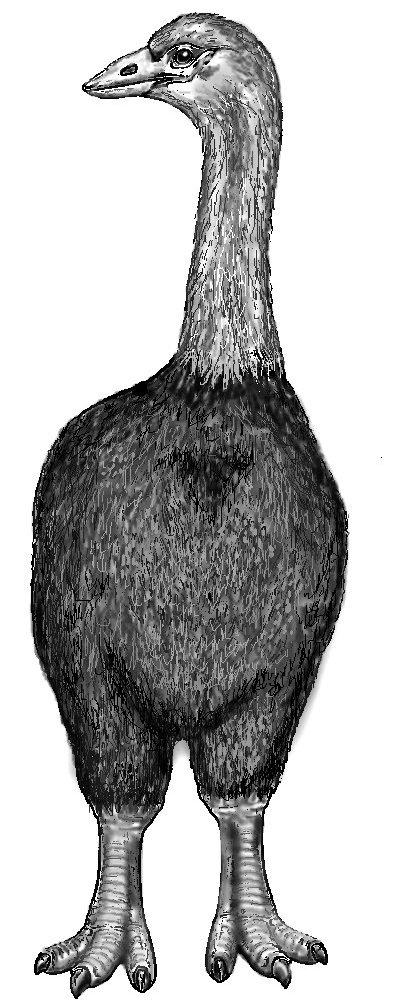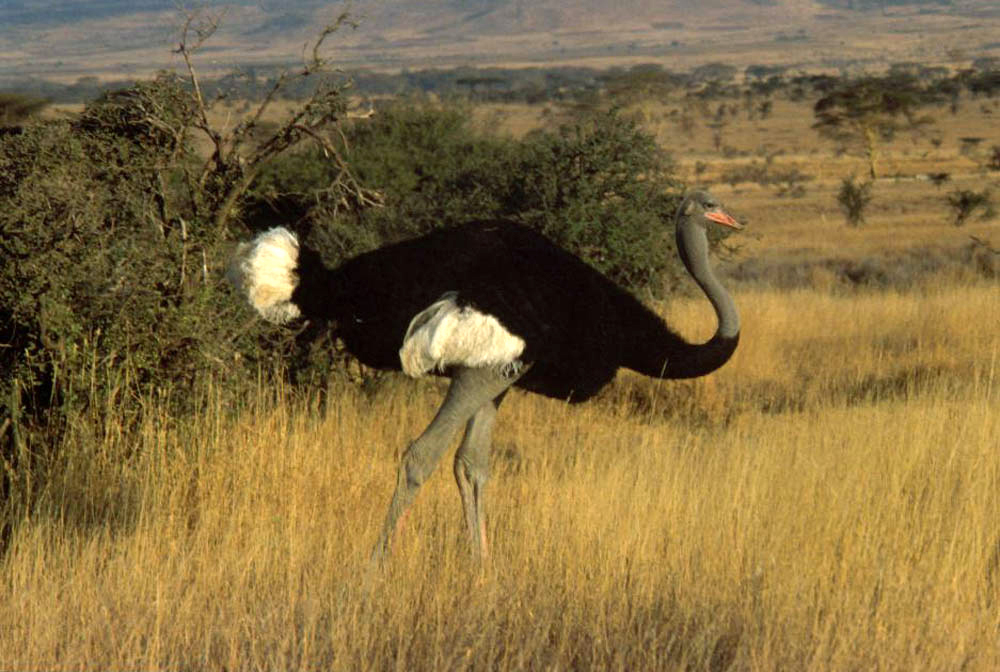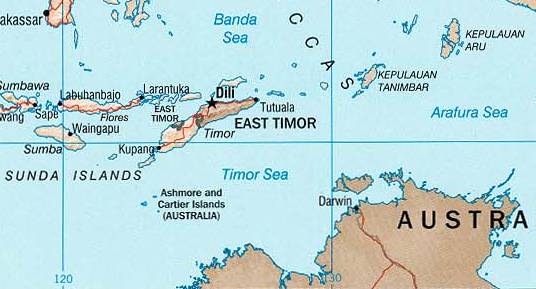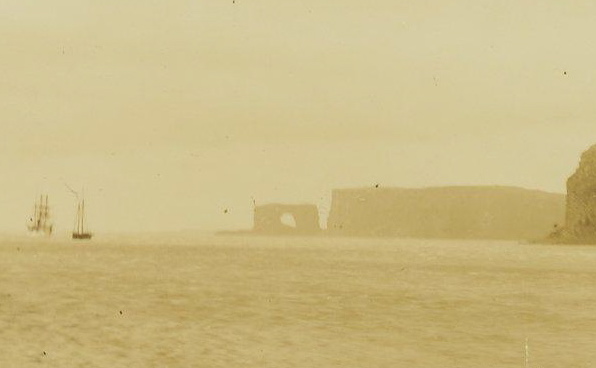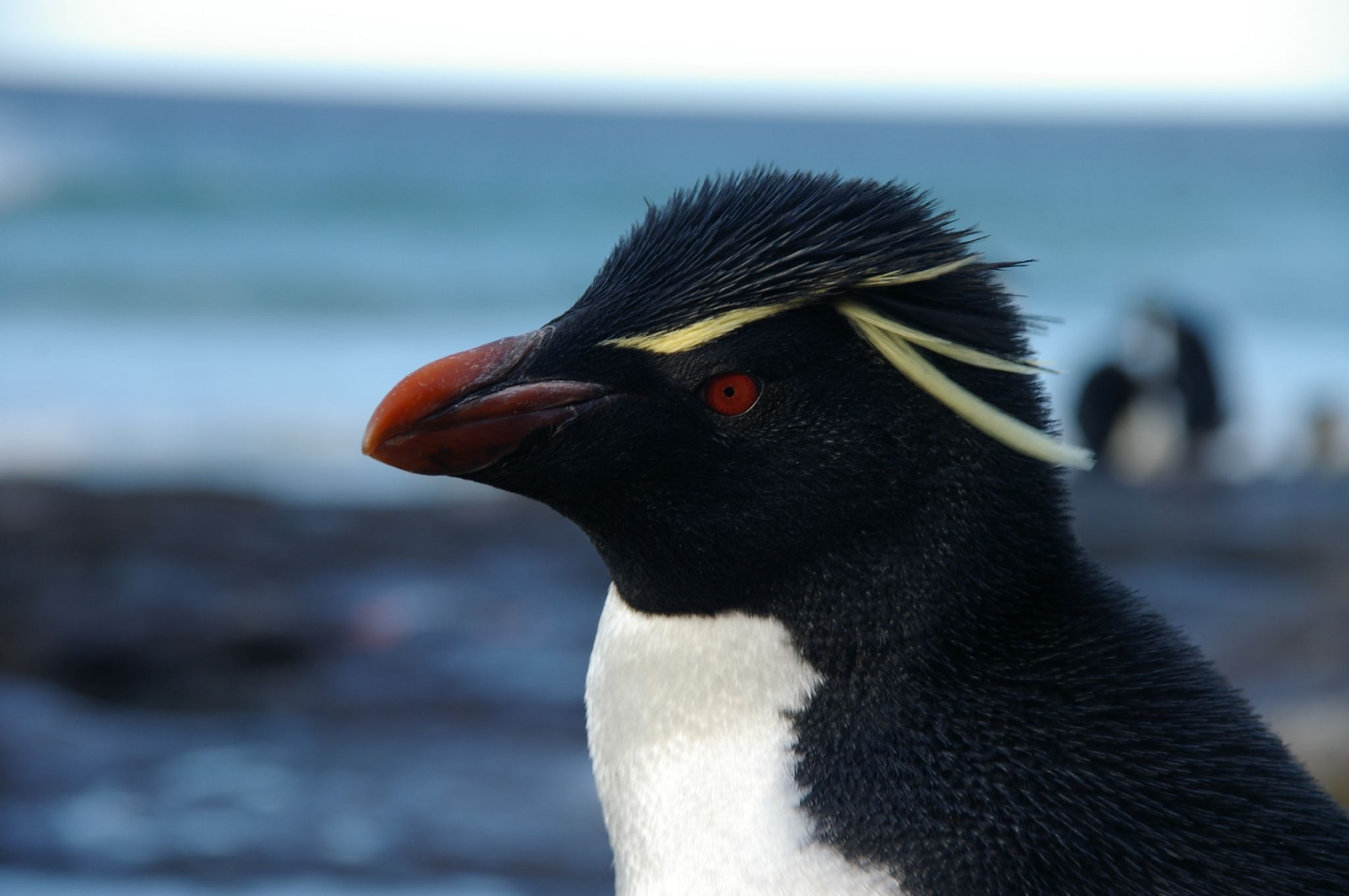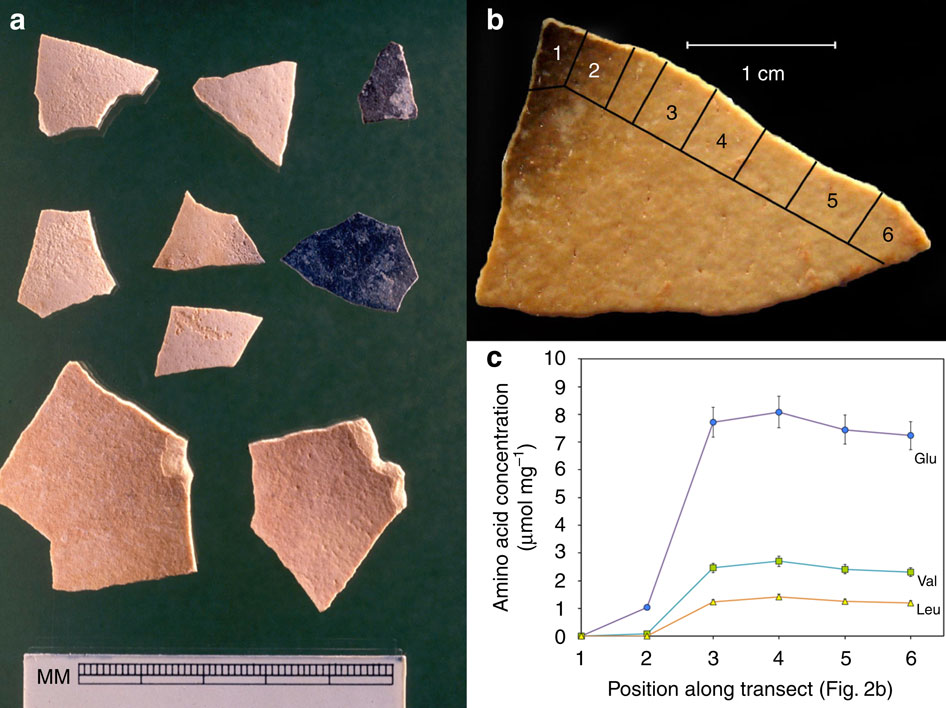|
Elephant Bird
Elephant birds are extinct flightless birds belonging to the Order (biology), order Aepyornithiformes that were native to the island of Madagascar. They are thought to have gone extinct around 1000 CE, likely as a result of human activity. Elephant birds comprised three species, one in the genus ''Mullerornis'', and two in ''Aepyornis.'' ''Aepyornis maximus'' is possibly the largest bird to have ever lived, with their eggs being the largest known for any amniote. Elephant birds are palaeognaths (whose flightless representatives are often known as ratites), and their closest living relatives are Kiwi (bird), kiwi (found only in New Zealand), suggesting that ratites did not diversify by vicariance during the breakup of Gondwana but instead convergently evolved flightlessness from ancestors that dispersed more recently by flying. Discovery Elephant birds have been extinct since at least the 17th century. Étienne de Flacourt, a French governor of Madagascar during the 1640s and 16 ... [...More Info...] [...Related Items...] OR: [Wikipedia] [Google] [Baidu] |
Aepyornis Maximus
''Aepyornis'' is an extinct genus of elephant bird formerly Endemism, endemic to Madagascar. The genus had two species, the smaller ''A. hildebrandti'' and the larger ''A. maximus'', which is possibly the largest bird ever to have lived. Its closest living relative is the New Zealand Kiwi (bird), kiwi. They became extinct sometime around 1000 Common Era, AD, probably as a result of human activity. Taxonomy Brodkorb (1963) listed four species of ''Aepyornis'' as valid: ''A. hildebrandti'', ''A. gracilis'', ''A. medius'' and ''A. maximus''. However, Hume and Walters (2012) listed only one species, ''A. maximus''. Most recently, Hansford and Turvey (2018) recognized only ''A. hildebrandti'' and ''A. maximus''. * ?''Aepyornis grandidieri'' Rowley 1867 nomen dubium * ''Aepyornis hildebrandti'' Carlos Burckhardt, Burckhardt, 1893 ** ''Aepyornis gracilis'' Louis Monnier (paleontologist), Monnier, 1913 ** ''Aepyornis lentus'' Alphonse Milne-Edwards, Milne-Edwards & Alfred Grandidier, Gra ... [...More Info...] [...Related Items...] OR: [Wikipedia] [Google] [Baidu] |
Roc (mythology)
The roc is an enormous legendary bird of prey in the popular mythology of the Middle East. The roc appears in Arab geographies and natural history, popularized in Arabian fairy tales and sailors' folklore. Ibn Battuta tells of a mountain hovering in the air over the China Seas, which was the roc. The story collection ''One Thousand and One Nights'' includes tales "Abd al-Rahman the Maghribi's Story of the Rukh" and "Sinbad the Sailor", both of which include the roc. Etymology The English form ''roc'' originates via Antoine Galland's French from Arabic ''ruḵḵ'' () and that from Persian language, Persian ''ruḵ'' ().roc /[phonetic transcription]/ n. Also (earlier) ✝roche, ✝rock, ✝ruc(k), ✝rukh. L16 [Sp. ''rocho'', ''ruc'' f. Arab. ''ruḵḵ'', f. Pers. ''ruḵ''.] A mythical bird of Eastern legend, imagined as being of enormous size and strength (''The New Shorter Oxford English Dictionary'', Clarendon Press, Oxford, Volume 2 N-Z, 1993 edition, page 2614) In both lang ... [...More Info...] [...Related Items...] OR: [Wikipedia] [Google] [Baidu] |
Ostrich
Ostriches are large flightless birds. Two living species are recognised, the common ostrich, native to large parts of sub-Saharan Africa, and the Somali ostrich, native to the Horn of Africa. They are the heaviest and largest living birds, with adult common ostriches weighing anywhere between 63.5 and 145 kilograms and laying the largest eggs of any living land animal.Del Hoyo, Josep, et al. Handbook of the birds of the world. Vol. 1. No. 8. Barcelona: Lynx edicions, 1992. With the ability to run at 70 km/h (43.5 mph), they are the fastest birds on land. They are farmed worldwide, with significant industries in the Philippines and in Namibia. South Africa produces about 70% of global ostrich products, with the industry largely centered around the town of Oudtshoorn. Ostrich leather is a lucrative commodity, and the large feathers are used as plumes for the decoration of ceremonial headgear. Ostrich eggs and meat have been used by humans for millennia. Ostrich ... [...More Info...] [...Related Items...] OR: [Wikipedia] [Google] [Baidu] |
Aepyornis Maximus 01 L
''Aepyornis'' is an extinct genus of elephant bird formerly endemic to Madagascar. The genus had two species, the smaller ''A. hildebrandti'' and the larger ''A. maximus'', which is possibly the largest bird ever to have lived. Its closest living relative is the New Zealand kiwi. They became extinct sometime around 1000 AD, probably as a result of human activity. Taxonomy Brodkorb (1963) listed four species of ''Aepyornis'' as valid: ''A. hildebrandti'', ''A. gracilis'', ''A. medius'' and ''A. maximus''. However, Hume and Walters (2012) listed only one species, ''A. maximus''. Most recently, Hansford and Turvey (2018) recognized only ''A. hildebrandti'' and ''A. maximus''. * ?''Aepyornis grandidieri'' Rowley 1867 nomen dubium * ''Aepyornis hildebrandti'' Burckhardt, 1893 ** ''Aepyornis gracilis'' Monnier, 1913 ** ''Aepyornis lentus'' Milne-Edwards & Grandidier, 1894 ** ?''Aepyornis minimus'' ** ?''Aepyornis mulleri'' Milne-Edwards & Grandidier, 1894 * ''Aepyornis maximus'' ... [...More Info...] [...Related Items...] OR: [Wikipedia] [Google] [Baidu] |
Mullerornis Agilis
''Mullerornis modestus'' is an extinct species of elephant bird, and the only member of the genus ''Mullerornis''. Taxonomy The genus is named after Georges Muller, a French explorer, who was killed in 1892 by hostile members of the Sakalava people. Synonyms of ''Mullerornis modestus'' *''Mullerornis betsilei'' Milne-Edwards & Grandidier, 1894 (Betsileo elephant bird) * ''Mullerornis agilis'' Milne-Edwards & Grandidier, 1894 (agile/coastal elephant bird) * ''Mullerornis rudis'' Milne-Edwards & Grandidier, 1894 (robust elephant bird) * ?''Mullerornis grandis'' Lamberton 1934 (holotype destroyed in a fire in 1995) Description ''Mullerornis'' is smaller than the more well-known '' Aepyornis,'' with a still substantial body mass of approximately . A bone possibly belonging to ''Mullerornis'' has been radiocarbon dated to about 1260 BP, suggesting that the animal was still extant at the end of the first millennium. ''Aepyornis modestus'' was shown by Hansford and Turvey (2018) t ... [...More Info...] [...Related Items...] OR: [Wikipedia] [Google] [Baidu] |
Timor Sea
The Timor Sea (, , or ) is a relatively shallow sea in the Indian Ocean bounded to the north by the island of Timor with Timor-Leste to the north, Indonesia to the northwest, Arafura Sea to the east, and to the south by Australia. The Sunda Trench marks the deepest point of the Timor Sea with a depth of more than 3300 metres, separating the continents of Oceania in the southeast and Asia to the northwest and north. The Timor sea is prone to earthquakes and tsunamis north of the Sunda Trench, due to its location on the Ring of Fire as well as volcanic activity and can experience major cyclones, due to the proximity from the Equator. The sea contains a number of reefs, uninhabited islands and significant hydrocarbon reserves. International disputes emerged after the reserves were discovered resulting in the signing of the Timor Sea Treaty. The Timor Sea was hit by the worst Montara oil spill, oil spill for 25 years in 2009. It is possible that Australia's first inhabitants cros ... [...More Info...] [...Related Items...] OR: [Wikipedia] [Google] [Baidu] |
Ostrich Egg
The egg of the ostrich (genus ''Struthio'') is the largest of any living bird (being exceeded in size by those of the extinct elephant bird genus '' Aepyornis''). The shell has a long history of use by humans as a container and for decorative artwork, including beads. The eggs are not commonly eaten. Biology The female common ostrich lays her fertilized eggs in a single communal nest, a simple pit, deep and wide, scraped in the ground by the male. The dominant female lays her eggs first, and when it is time to cover them for incubation she discards extra eggs from the weaker females, leaving about 20 in most cases. A female common ostrich can distinguish her own eggs from the others in a communal nest. Ostrich eggs are the largest of all eggs, though they are actually the smallest eggs relative to the size of the adult bird — on average they are long, wide, and weigh , over 20 times the weight of a chicken's egg and only 1 to 4% the size of the female. They are glossy c ... [...More Info...] [...Related Items...] OR: [Wikipedia] [Google] [Baidu] |
Kerguelen Islands
The Kerguelen Islands ( or ; in French commonly ' but officially ', ), also known as the Desolation Islands (' in French), are a group of islands in the subantarctic, sub-Antarctic region. They are among the Extremes on Earth#Remoteness, most isolated places on Earth, with the closest territory being the Heard Island and McDonald Islands territory of Australia located at roughly , and the nearest inhabited territory being Madagascar at more than in distance. The islands, along with Adélie Land, the Crozet Islands, Île Amsterdam, Amsterdam and Île Saint-Paul, Saint Paul islands, and France's Scattered Islands in the Indian Ocean, are part of the French Southern and Antarctic Lands and are administered as a separate district. The islands constitute one of the two exposed parts of the Kerguelen Plateau (the other being Heard Island and the McDonald islands), a large igneous province mostly submerged in the southern Indian Ocean. The main island, Grande Terre, is in area, about ... [...More Info...] [...Related Items...] OR: [Wikipedia] [Google] [Baidu] |
Penguin
Penguins are a group of aquatic flightless birds from the family Spheniscidae () of the order Sphenisciformes (). They live almost exclusively in the Southern Hemisphere. Only one species, the Galápagos penguin, is equatorial, with a small portion of its population extending slightly north of the equator (within a quarter degree of latitude). Highly adapted for life in the ocean water, penguins have countershaded dark and white plumage and flippers for swimming. Most penguins feed on krill, fish, squid and other forms of sea life which they catch with their bills and swallow whole while swimming. A penguin has a spiny tongue and powerful jaws to grip slippery prey. They spend about half of their lives on land and the other half in the sea. The largest living species is the emperor penguin (''Aptenodytes forsteri''): on average, adults are about tall and weigh . The smallest penguin species is the little blue penguin (''Eudyptula minor''), also known as the fairy pen ... [...More Info...] [...Related Items...] OR: [Wikipedia] [Google] [Baidu] |
Genyornis Newtoni
''Genyornis newtoni'' is an extinct species of large, flightless bird that lived in Australia during the Pleistocene Epoch until around 50,000 years ago. Over two metres in height, they were likely herbivorous. Many other species of Australian megafauna became extinct in Australia around that time, coinciding with the arrival of humans. It is the last known member of the extinct flightless bird family Dromornithidae which had been part of the fauna of the Australian continent for over 30 million years. They are not closely related to ratites such as emus, and their closest living relatives are thought to be fowl. Taxonomy The species was first described in 1896 by Edward Charles Stirling and A. H. C. Zeitz, the authors giving the epithet ''newtoni'' for the Cambridge professor Alfred Newton. The name of the genus is derived from the ancient Greek ''γένυς'' (''génus'') 'jaw; chin' and ''ὄρνις'' (''órnis'') 'bird', because of the relatively large size of the l ... [...More Info...] [...Related Items...] OR: [Wikipedia] [Google] [Baidu] |
Cervantes, Western Australia
Cervantes is a town in Western Australia located about north-north-west of the state capital, Perth, in the Shire of Dandaragan local government area. At the 2016 census, Cervantes had a population of 527. The town was named after a ship that was wrecked nearby. The ship, in turn, was named after Miguel de Cervantes, author of ''Don Quixote''. The principal industry in the town is fishing. The Pinnacles are nearby in Nambung National Park which supports a small tourism industry. The saline Lake Thetis, which contains stromatolite Stromatolites ( ) or stromatoliths () are layered Sedimentary rock, sedimentary formation of rocks, formations (microbialite) that are created mainly by Photosynthesis, photosynthetic microorganisms such as cyanobacteria, sulfate-reducing micr ...s, is nearby. An arts festival is held every year in the town, usually on the last weekend of October. Cervantes lies on the shore of the Jurien Bay Marine Park. [...More Info...] [...Related Items...] OR: [Wikipedia] [Google] [Baidu] |

